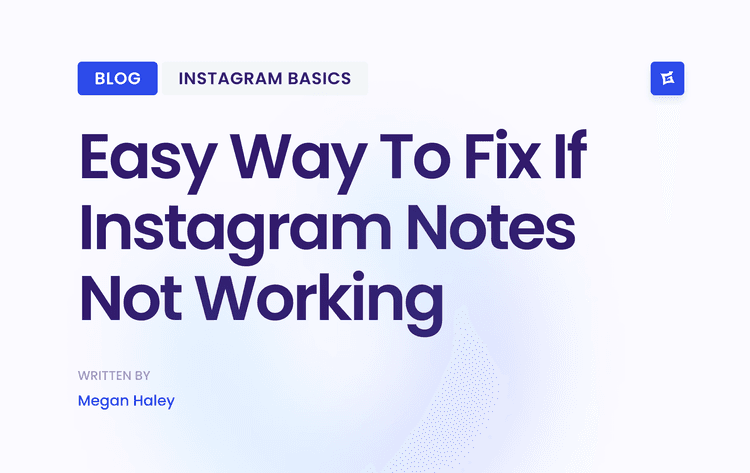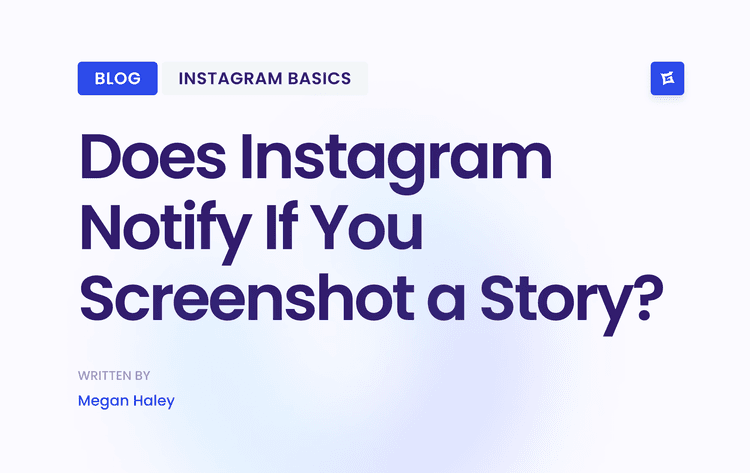Understanding Social Media ROI Beyond Vanity Metrics
Moving Beyond Likes and Shares
So, how do successful brands measure this more holistic ROI? They focus on both tangible returns and intangible value. Tangible returns include things you can directly measure, like revenue generated, leads captured, and cost savings achieved through social media.
On the other hand, intangible value is a bit trickier to quantify. It encompasses things like brand awareness, customer loyalty, and market positioning. A well-rounded strategy considers both the immediate and long-term impact of these elements.
Social media platforms are increasingly becoming sales channels themselves. In fact, as of 2025, social networks drove 17.11% of all online sales globally. This trend is expected to continue, with social commerce projected to surpass $1 trillion by 2028. Discover more insights about social media ROI statistics.
This screenshot from SproutSocial's website shows the comprehensive nature of their social media management platform:
The platform's features, including analytics and engagement tools, emphasize data-driven decision-making. This focus on data allows businesses to shift away from vanity metrics and concentrate on actionable insights that drive real business outcomes.
This data-driven approach is essential for accurately measuring and maximizing social media ROI. By understanding the true value of social media, marketers can justify their spending and demonstrate its contribution to overall business objectives.
The Metrics That Drive Business Growth
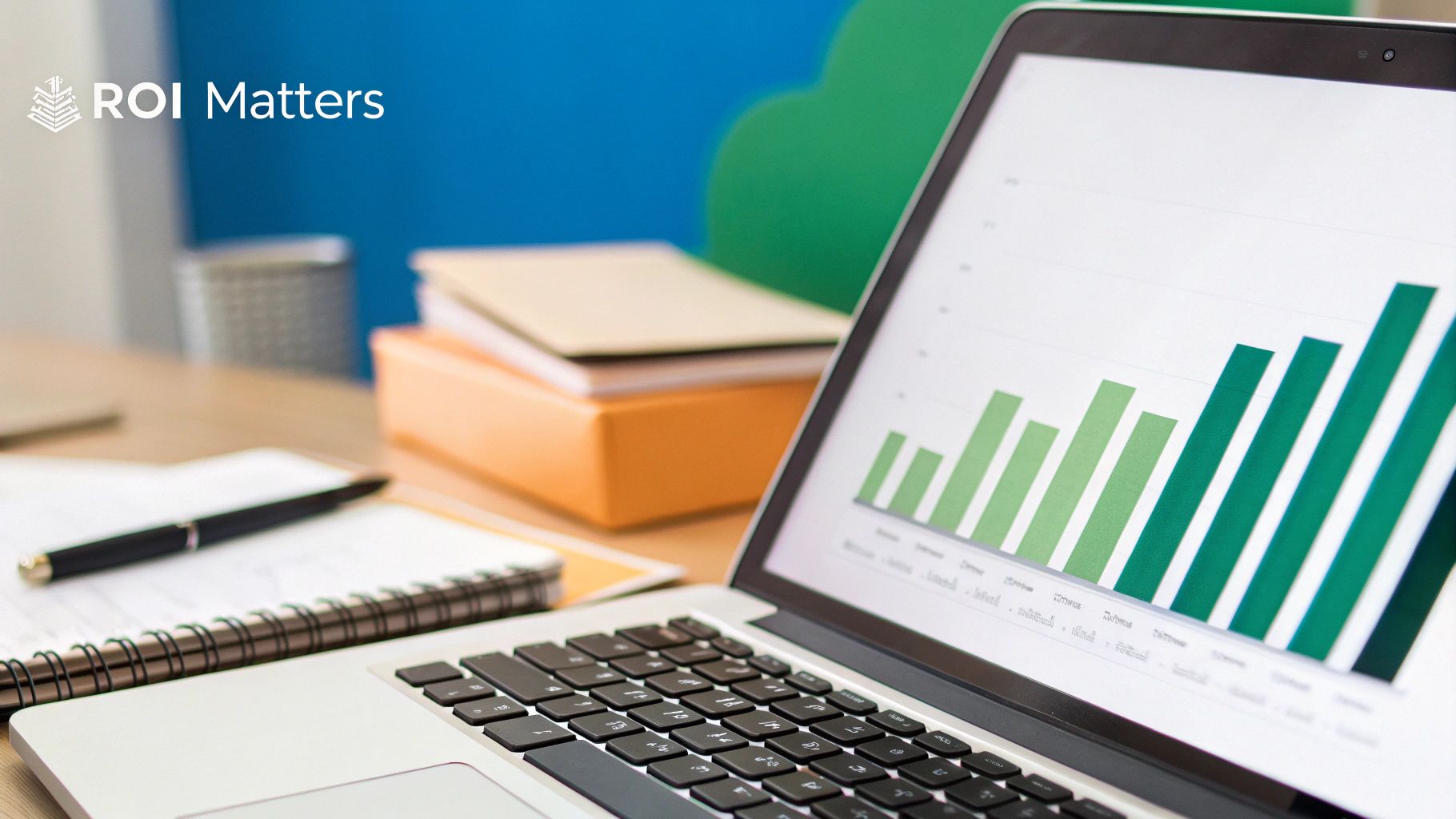
This screenshot from Google Analytics gives you a glimpse into the treasure trove of data you can use to understand website traffic and user behavior. By analyzing this data, you can see exactly which social media strategies are bringing in traffic and helping turn those visitors into customers. Knowing how to connect with your audience is key, and digging into proven social selling best practices can be a game-changer.
Let's say your goal is to generate leads. Simply counting your followers won’t tell you much. You need to track conversion rates, which show you the percentage of social media users who take a specific action, like filling out a lead generation form. Figuring out your customer acquisition cost (CAC) from social media also helps you understand the real cost of each new lead. This means social media ROI isn’t just about the money coming in, but also how efficiently you're getting those leads.
Beyond the Basics: Leading Vs. Lagging Indicators
While knowing your CAC and conversion rates is vital, understanding the difference between leading and lagging indicators is just as important. Lagging indicators, like sales revenue, show you what has happened. Leading indicators, however, offer a peek into the future. High website traffic from social media, for example, might suggest future sales, even if those sales haven’t happened yet.
Think of a restaurant owner checking the number of reservations made through their social media pages. This is a leading indicator, giving them a sense of potential revenue before customers even arrive. The total revenue at the end of the night, on the other hand, is a lagging indicator; it reflects what’s already been earned.
Building a Meaningful Measurement Dashboard
Tracking the right combination of metrics is like having the right tools for the job. You wouldn't use a hammer to screw in a lightbulb, right? Different social media platforms also need different metrics for effective ROI measurement. For example, engagement rate might be more important on Instagram than on LinkedIn, where click-through rates and lead generation often take center stage.
The goal isn't to cram every possible metric onto your dashboard. Instead, focus on the key performance indicators (KPIs) that align with your specific business goals. Think of it like baking a cake: too many ingredients can be a disaster. You need the right mix for the desired result.
To help you choose the right metrics, let's look at a comparison of some essential social media ROI metrics.
Before we dive in, here's a list summarizing key social media ROI metrics, their calculation methods, and what each metric reveals about your return on investment. This list will help you choose the most relevant metrics for your goals and platforms.
Conversion Rate is calculated by dividing the number of conversions by the number of clicks and multiplying by 100. It measures the percentage of users who complete a desired action, indicating the effectiveness of your social media content in driving conversions. It is best used in lead generation campaigns and e-commerce sales.
Customer Acquisition Cost (CAC) is determined by dividing the total marketing spend by the number of new customers acquired. This metric measures the cost of acquiring a new customer and reflects the efficiency of your marketing efforts. It is useful for evaluating the profitability of campaigns.
Engagement Rate is calculated by dividing total engagements by total reach and multiplying by 100. It measures the level of interaction users have with your content, providing insight into audience interest and the effectiveness of your content strategy. It is especially useful for brand building and community growth.
Click-through rate (CTR) is found by dividing the number of clicks by the number of impressions and multiplying by 100. This metric shows the percentage of users who click on your link, helping you understand the effectiveness of your calls to action. It is typically used for driving traffic to your website or landing page.
Reach refers to the total number of unique users who saw your content. It measures brand awareness and visibility, providing insight into the potential audience size and the reach of your campaigns. This metric is ideal for brand awareness campaigns and influencer marketing.
This list illustrates how different metrics provide unique insights into your social media ROI. Choosing the right combination will depend on your specific business goals and the platforms you're using.
Finally, attribution modeling is the last piece of the puzzle. This helps you understand how much each interaction a customer has with your brand contributes to a conversion. Knowing the role social media plays in the overall sales process, whether it’s the first touchpoint or the final nudge, is vital for accurately measuring its ROI. It's like putting together a story—each interaction is part of the narrative, but some chapters are more important than others.
ROI Calculation Methods That Make Sense
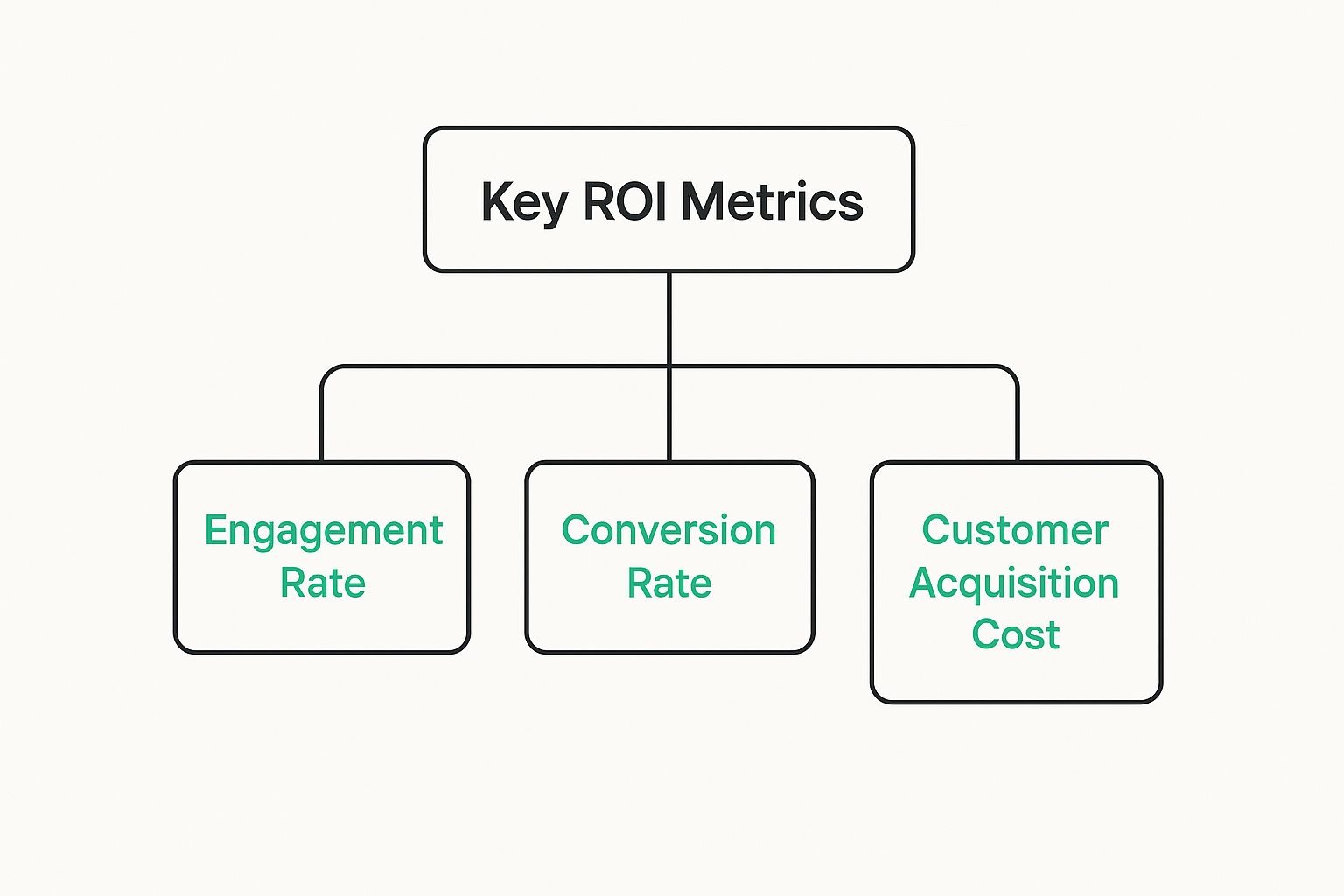
The infographic above gives us a visual guide to the core metrics involved in calculating social media ROI. Notice how it starts with the key ROI metrics and then branches out to engagement rate, conversion rate, and customer acquisition cost. These three metrics are like the cornerstones of understanding just how well your social media investment is performing. They work together to give you a complete overview of your campaign's effectiveness.
Calculating social media ROI isn't about plugging numbers into overly complicated formulas. It's more about picking the right formula based on what you're hoping to achieve.
For example, if your main goal is generating leads, your ROI calculation should center around the cost per lead and the value of each lead. This is different from an e-commerce business focused on direct sales, where ROI is directly linked to the revenue generated minus the marketing costs. Let's explore a few common ways to approach this.
Simple ROI Calculation
The most straightforward formula is: ((Return - Investment) / Investment) * 100. This gives you a percentage that represents your return. So, if you spend $1,000 and generate $2,000 in revenue, your ROI is 100%. Pretty simple, right? But sometimes this method doesn't capture the full story of social media's impact.
Customer Lifetime Value (CLV)
For a deeper dive, let's talk about Customer Lifetime Value (CLV). Think of it this way: a customer you gain through social media might continue to bring in revenue over a long period. CLV tries to estimate the total revenue a customer will generate throughout their entire relationship with your brand. This is especially helpful for subscription services or businesses with high customer retention rates.
Attribution Modeling
Another key piece of the puzzle is attribution modeling. Imagine trying to figure out which interactions led to a conversion. Was it a Facebook ad? An Instagram story? Or a mix of both? Different attribution models give credit in different ways.
For example, the last-click attribution model gives all the credit to the final interaction before the conversion. On the other hand, a multi-touch attribution model spreads the credit across multiple touchpoints. The best model for you depends on your specific customer journey.
Let's take a look at how a platform like Hootsuite handles this.
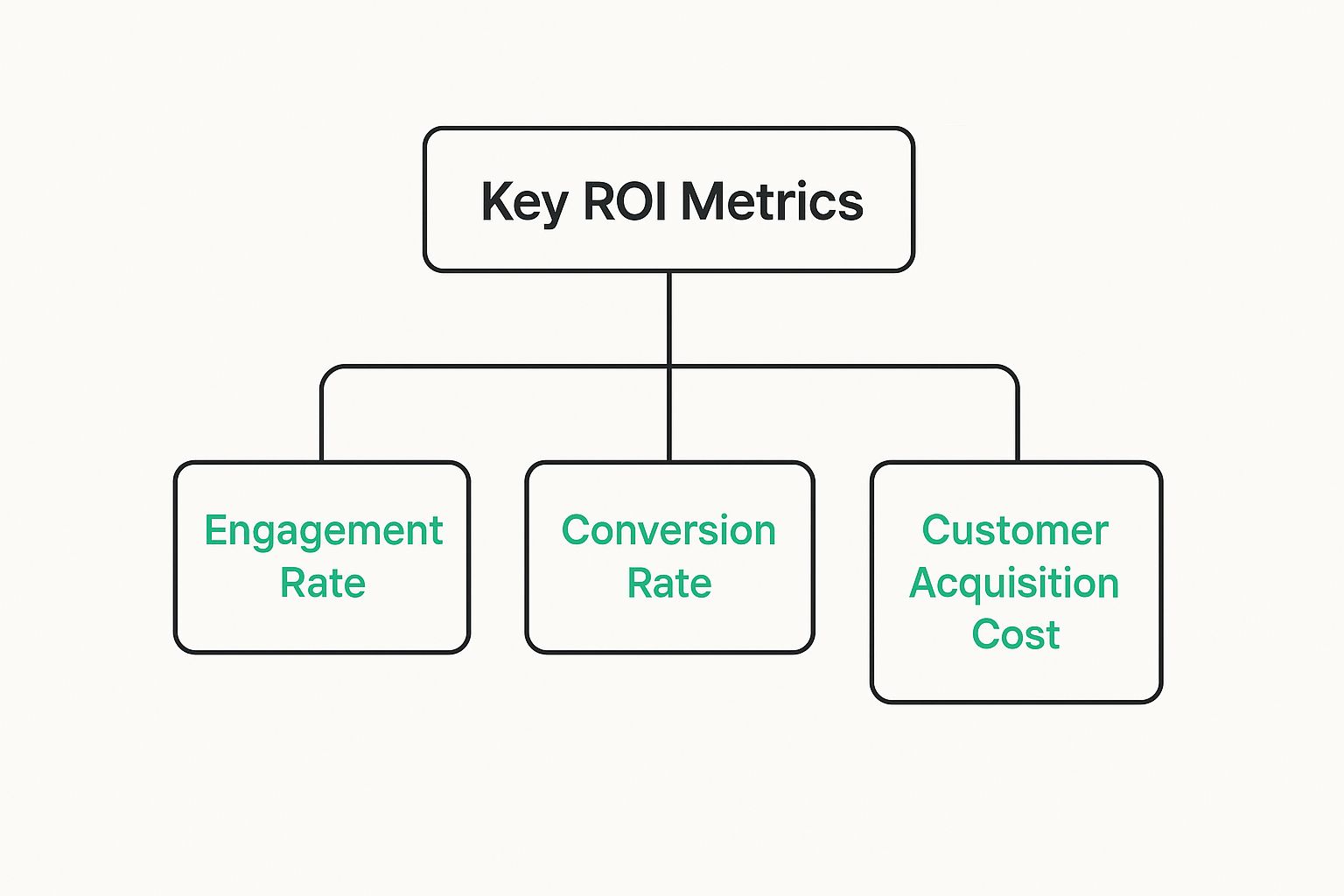
This screenshot from Hootsuite highlights its ability to manage and analyze various aspects of social media marketing. Hootsuite's dashboard focuses on streamlined campaign management and performance tracking. This reflects the increasing need for data-driven social media strategies. These features help you measure key ROI elements, leading to a more informed and effective approach.
To make things even clearer, let's look at a table summarizing these different ROI calculation methods.
Social Media ROI Calculation Methods
Simple ROI is calculated using the formula: ((Return - Investment) / Investment) × 100. It is best used for getting a quick overview of profitability. However, it doesn't account for long-term value or complex conversions. For example, if you spent $1,000 and earned $2,000, the ROI would be 100%.
Customer Lifetime Value (CLV) has a formula that varies based on the business model. It is most useful for subscription services and businesses with high customer retention. One limitation is that it requires estimating future customer behavior. For instance, a subscriber paying $20 per month for two years would have a CLV of $480.
Attribution Modeling also uses a formula that varies based on the model used (e.g., last-click or multi-touch). It helps in understanding the customer journey and assigning credit to different touchpoints. A limitation is that it can be complex to implement and requires detailed tracking. An example is determining which combination of Facebook ads and Instagram stories led to a purchase.
As you can see, each method offers a unique perspective on calculating social media ROI. The best approach depends on your specific business goals and data availability.
Want to go even deeper? Check out our guide on using a social media ROI calculator to measure campaign success. No matter which method you choose, remember that accurate ROI calculation depends on two things: reliable data and a clear understanding of your business objectives.
This means tracking the right metrics, analyzing them effectively, and adjusting your strategies based on what you learn. It's an ongoing process that lets you continuously refine your approach and maximize your social media ROI over time.
Building Your ROI Tracking Infrastructure
Building a reliable system for tracking your social media ROI isn’t about purchasing the latest analytics software. It's more like building a house: you wouldn't install a hot tub before laying the foundation, right? Many businesses make this mistake with social media analytics, diving into complex data before getting the basics right. This often leads to reports that look fancy but don't reflect reality.
Laying the Groundwork: Essential Tracking Components
So, what are the fundamental elements of a social media ROI tracking system that works? It begins with proper Google Analytics configuration. This isn't just about setting up an account; it’s about customizing it to capture the data relevant to your business. Think of it as tailoring your toolbox – you want the right tools for the job.
Next, you need a solid UTM parameter strategy. UTM parameters are like tiny tracking devices attached to your links. They show you where your website traffic originates, down to the specific social media post. Imagine tracing every customer back to their first interaction with your brand—that’s the power of UTM parameters. For effective tracking, you need to understand best practices for social media ROI measurement. Finally, integrating your CRM (Customer Relationship Management) system with your social media analytics is critical. This connects social media interactions with actual customer behavior and sales data, linking your marketing efforts to business outcomes.

This Google Analytics screenshot shows detailed information about user acquisition, including source/medium data. By analyzing this data, you can pinpoint which social media platforms are driving the most valuable traffic to your website. This becomes crucial when deciding where to allocate your social media budget and optimizing campaigns for maximum ROI.
Navigating the Changing Privacy Landscape
Let's be realistic: privacy changes, iOS updates, and cookie restrictions are making traditional tracking methods harder. It's like navigating with an out-of-date map – you need new strategies. Fortunately, alternative measurement approaches, like cohort analysis and probabilistic modeling, help you understand your ROI even as the digital world evolves.
Automating Data Collection While Maintaining Accuracy
Tracking social media ROI requires a lot of data, which can be overwhelming. It's like trying to drink from a firehose. This is where automation tools become valuable. They streamline data collection without compromising accuracy, freeing you to focus on analysis and strategy. But be careful: not all tools are created equal. Some are powerful assets; others are expensive complications. Choose wisely.
Platform-Specific ROI Optimization Strategies
Imagine pitching a high-end sports car on TikTok. Or a complex software solution on Pinterest. Feels a bit off, right? That’s because each platform has its own vibe, its own audience. This highlights the core principle of platform-specific ROI optimization: knowing where your audience hangs out and what that platform does best. Social media ROI isn't a universal formula; it's about finding the right fit.
Matching Strategies to Platform Dynamics
Think about LinkedIn. It's the go-to place for professionals, making it ideal for B2B marketing. Sharing detailed case studies and white papers here can drive measurable leads and conversions. Meanwhile, on Instagram, it's all about visuals. High-quality images and engaging Stories are key for building your brand and working with influencers.
Then there's TikTok. Its algorithm loves short-form videos, making it incredibly powerful for reaching new audiences and creating viral moments. While directly measuring sales can be tricky on TikTok, focusing on metrics like brand awareness, reach, and engagement provides valuable insights.
Facebook, with its massive user base, excels at community building. Regular interaction, targeted ads, and engaging with groups are essential for maximizing ROI on this platform. It’s a clear example of how diverse the social media landscape is.
This screenshot from Instagram’s business page shows how the platform emphasizes audience insights and engagement.
The available tools underscore how important it is to understand your audience’s demographics and how they interact on the platform. This knowledge is essential for targeting your campaigns effectively and measuring your ROI. Each platform offers its own set of tools specifically designed for its unique environment.
Budget Allocation Based on ROI Potential
Savvy marketers don’t just throw money at the most popular platforms. They analyze ROI potential based on each platform’s dynamics and how well it’s performed in the past. A successful B2B software company might invest heavily in LinkedIn, where it can connect with decision-makers and generate qualified leads. A fashion brand, on the other hand, might prioritize Instagram and TikTok for visual storytelling and influencer collaborations.
New platforms always present exciting opportunities, but they also come with risks. While early adoption can sometimes lead to big rewards, it's important to carefully evaluate if a new platform aligns with your target audience and business goals before shifting resources away from proven performers. This ensures your budget is always working towards your objectives.
Maintaining Consistent Brand Messaging Across Platforms
Optimizing for each platform doesn't mean your brand should have a split personality. While the content formats and engagement strategies might differ, your core message should remain consistent across all your social media channels. This creates a unified experience for your audience, no matter where they interact with you. This builds trust and reinforces your brand identity over time.
Ultimately, platform-specific ROI optimization is about leveraging each platform's strengths while staying true to your brand and overall marketing goals. It’s a balancing act that requires careful planning, constant testing, and data-driven decisions.
Avoiding ROI Measurement Traps That Kill Results
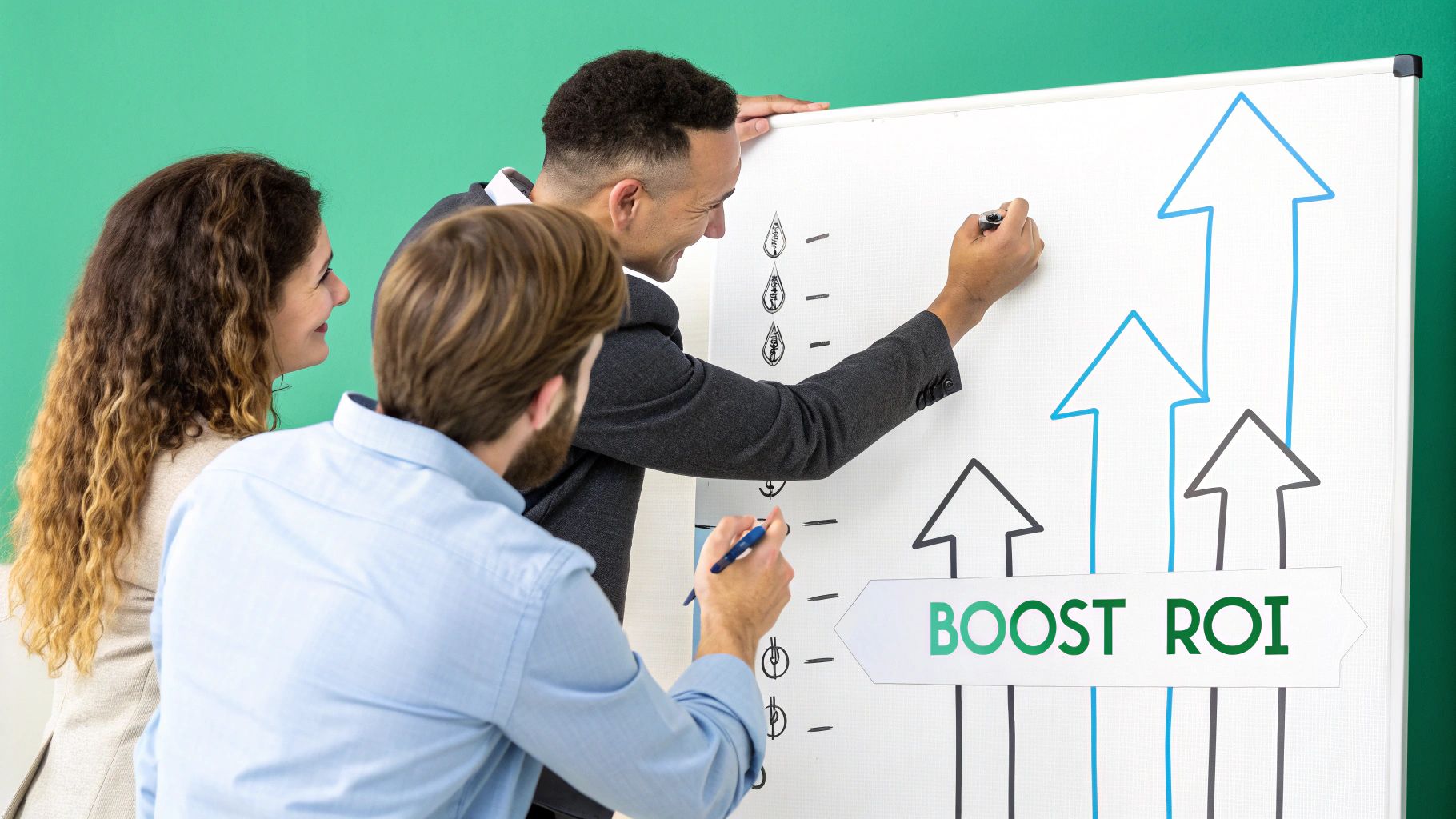
This screenshot shows Facebook Ads Manager, a helpful tool for running targeted ad campaigns. But even with powerful tools like this, it’s easy to fall into measurement traps that distort your social media ROI. See all those metrics? Without a clear idea of what drives business value, it's like wandering through a data maze.
Even experienced marketers can stumble into pitfalls that make their data misleading. These aren’t small mistakes; they're fundamental errors that can send your whole social media strategy in the wrong direction. Think of it like using a broken GPS – you might end up miles off course without even knowing it. Let's explore some common traps and how to steer clear.
The Last-Click Attribution Fallacy
Many marketers rely only on last-click attribution, meaning they credit the final interaction before a sale. But this overlooks the winding path customers often take. Imagine someone discovers your product on Instagram, later visits your website through a Google search, and finally buys something after clicking a Facebook ad. Last-click attribution would ignore Instagram and Google entirely, giving you a skewed view of social media’s real impact.
Seasonal Fluctuations and ROI
Seasonal trends can dramatically affect your results, making comparisons between different periods inaccurate. A spike in sales during the holidays might look like a huge ROI win, even if your social media strategy didn't change. For a more accurate picture, compare your performance to the same period last year. This accounts for those predictable seasonal ups and downs.
Comparing Apples to Spacecraft: Different Channels, Different Metrics
Comparing social media ROI to email marketing ROI is like comparing apples and spacecraft. They have different jobs and need different ways of measuring success. Social media is about building your brand and connecting with your audience, while email marketing is great for direct responses and nurturing leads. Each channel has its strengths and needs its own set of metrics.
You might be interested in: Gainsty's guide on social media ROI measurement.
Correlation vs. Causation: The Dangerous Misconception
Just because two things happen together doesn't mean one causes the other. Correlation isn't causation. If your social media followers and sales go up, it’s tempting to think one caused the other. But what if a new product launch or a successful PR campaign was the real driver?
The Vanity Metric Vortex
Vanity metrics, like follower counts and likes, are easy to get excited about. But they rarely tell the whole story. They might give you a sense of brand visibility, but they don't show how your social media work is impacting your business. It’s like judging a book by its cover – you could be missing the real value inside.
By understanding these pitfalls and using the right strategies, you can build a measurement system that gives you accurate, useful information. This lets you make smart decisions and get the most out of your social media ROI. You’ll move from just tracking numbers to truly understanding the value of your social media efforts.
Advanced Strategies for ROI Maximization
Once you’re comfortable measuring your social media ROI, it’s time to think about how to actively improve those returns. This is where good social media marketers become great ones. They develop strategies to achieve ongoing growth over time. Think of it like compounding interest: your initial investment generates returns, and then those returns generate even more returns.
Predictive Analytics and Behavioral Segmentation
Advanced social media marketers use predictive analytics to anticipate future trends and customer behavior. It’s not magic, it's simply using past data to make educated guesses about the future. This foresight allows you to create highly targeted campaigns. For example, imagine your data shows swimwear sales always spike in June. You can prepare your summer campaigns in advance to capitalize on that predictable increase in demand.
Behavioral segmentation refines this even further. Picture dividing your audience into groups based on their past actions, like visiting your website, purchasing products, or interacting with your social media posts. Now you can tailor your message to each group’s specific needs. Someone who regularly watches your product demos might be ready for a sales offer, while a new follower might appreciate an introductory guide.
A/B Testing and Conversion Optimization
A/B testing is crucial for optimizing your social media ROI. Don’t just test different images or headlines—test entire customer journeys. For example, try two different welcome sequences for new followers. One focuses on product features, the other on customer testimonials. By analyzing the results, you can determine which sequence leads to higher conversions and builds stronger customer relationships.
This screenshot from Buffer shows how the platform simplifies social media management. Buffer provides tools for scheduling, analyzing, and engaging with your audience—all key ingredients for a successful ROI strategy. Streamlining these processes frees up your time to focus on optimizing your campaigns and analyzing your results.
Advanced Techniques for Long-Term Growth
Several other key tactics can maximize your social media ROI. For a deeper dive, check out our guide on social media growth strategies. Cohort analysis helps you understand long-term customer value by grouping users with shared characteristics, like their acquisition date. This allows you to observe their behavior over time and identify which groups are most valuable.
Multi-touch attribution modeling is essential for understanding complex B2B sales cycles. It recognizes that multiple interactions, like social media ads, website visits, and emails, contribute to a final conversion. This gives you a clearer picture of social media's impact on sales.
Dynamic content optimization tailors your content in real-time based on user behavior. Think of it like a personalized website experience, but for social media. This ensures users see the most relevant content, boosting engagement and conversions.
Leveraging User-Generated Content, Influencer Partnerships, and Community Building
These strategies create a ripple effect for your social media ROI. User-generated content (UGC) can go viral, expanding your reach organically and building trust with potential customers. Imagine a contest encouraging customers to share photos of your product. This generates authentic content and boosts your brand's visibility.
Influencer partnerships can tap into existing audiences and leverage the influencer’s credibility. The right influencer can introduce your brand to highly engaged followers, increasing awareness and sales.
Community-building initiatives turn customers into advocates. By nurturing a sense of belonging and facilitating interaction, you create a loyal customer base that promotes your brand. A dedicated Facebook group where customers share tips and connect is a great example.
Social Listening, Sentiment Analysis, and Budget Allocation
Social listening and sentiment analysis reveal opportunities your competitors might be overlooking. Tracking conversations and analyzing sentiment around your brand offers valuable insights into customer needs. This data can inform your content strategy, product development, and overall marketing approach.
Finally, smart budget allocation strategies automatically direct resources to your top-performing campaigns. This ensures maximum efficiency, maximizing your social media ROI. Think of it as a self-adjusting system constantly refining its approach based on performance data.
Boost your Instagram followers organically with Gainsty. Get real followers, real engagement, and real results. Visit Gainsty now!

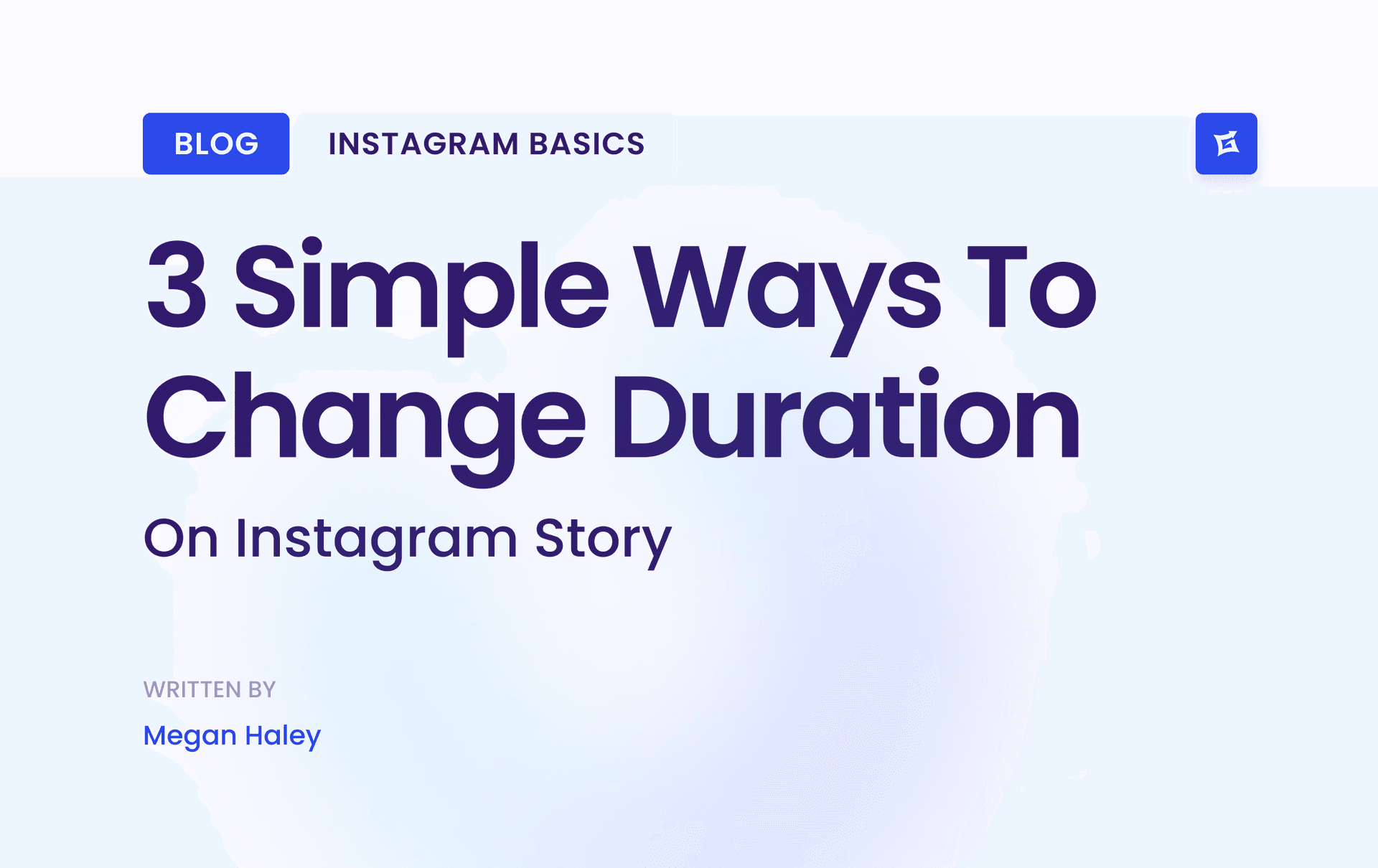
.png&w=1920&q=75&dpl=dpl_5s5UbBNsq2av8n82cZ2R5qYP6gxi)
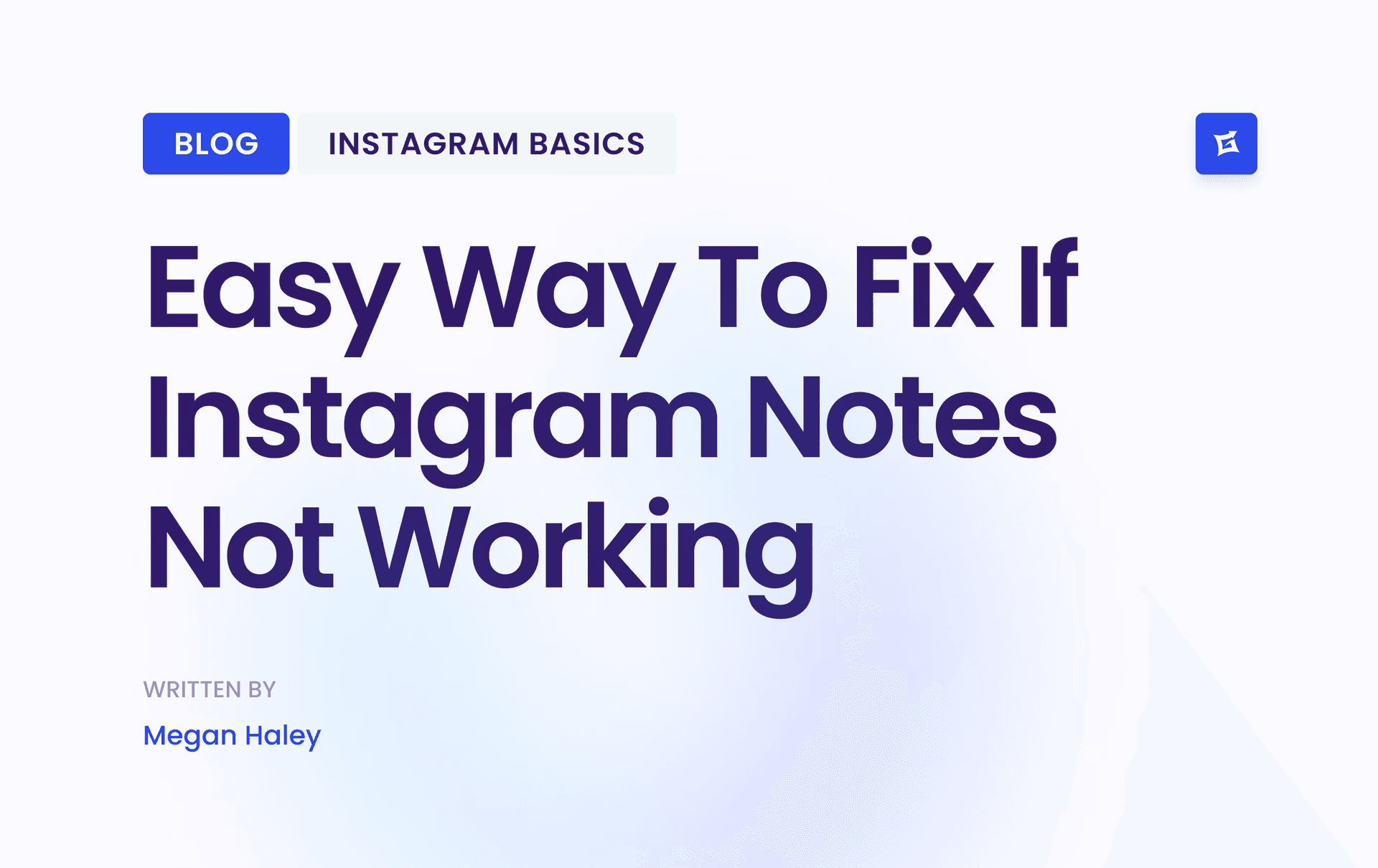
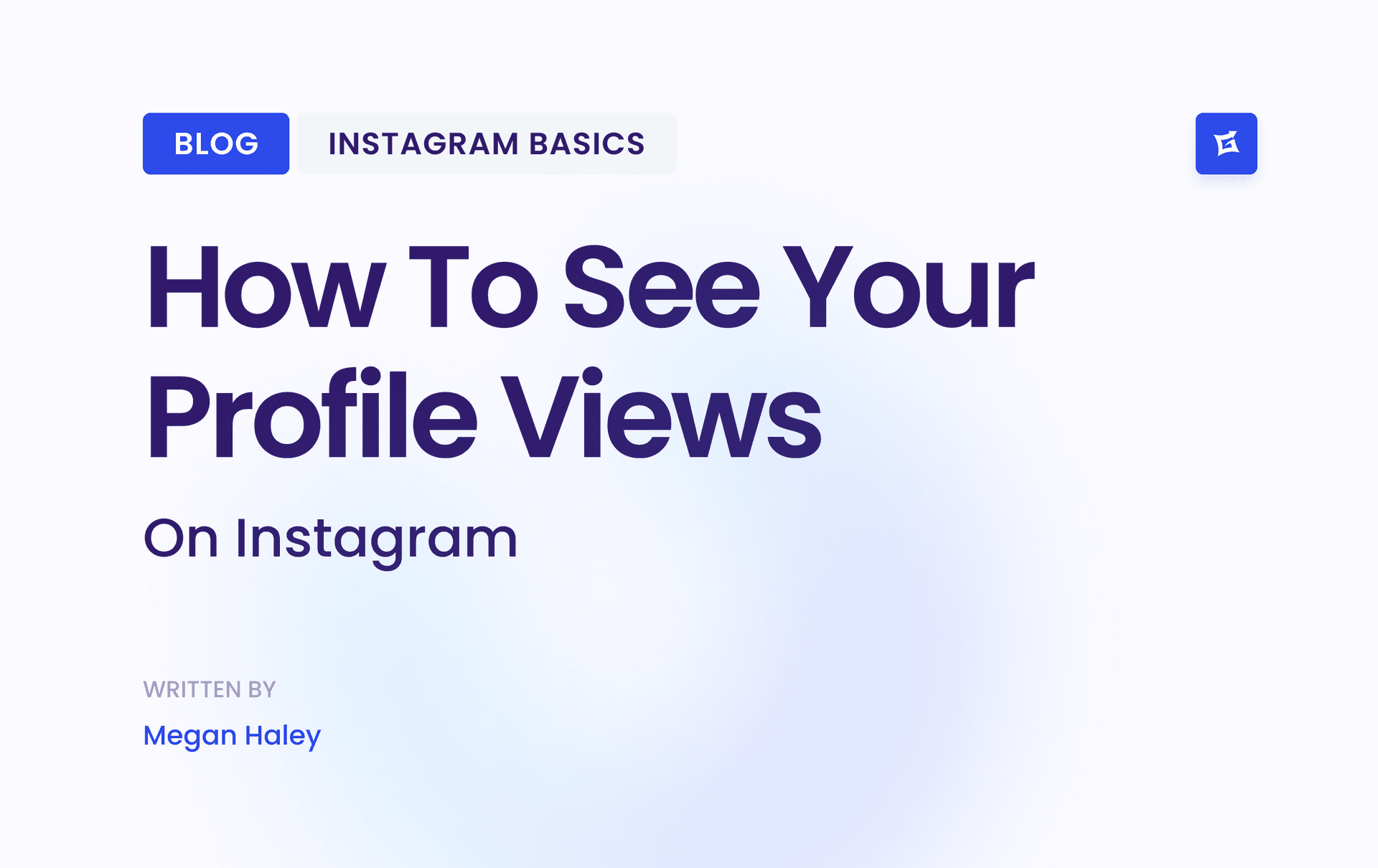
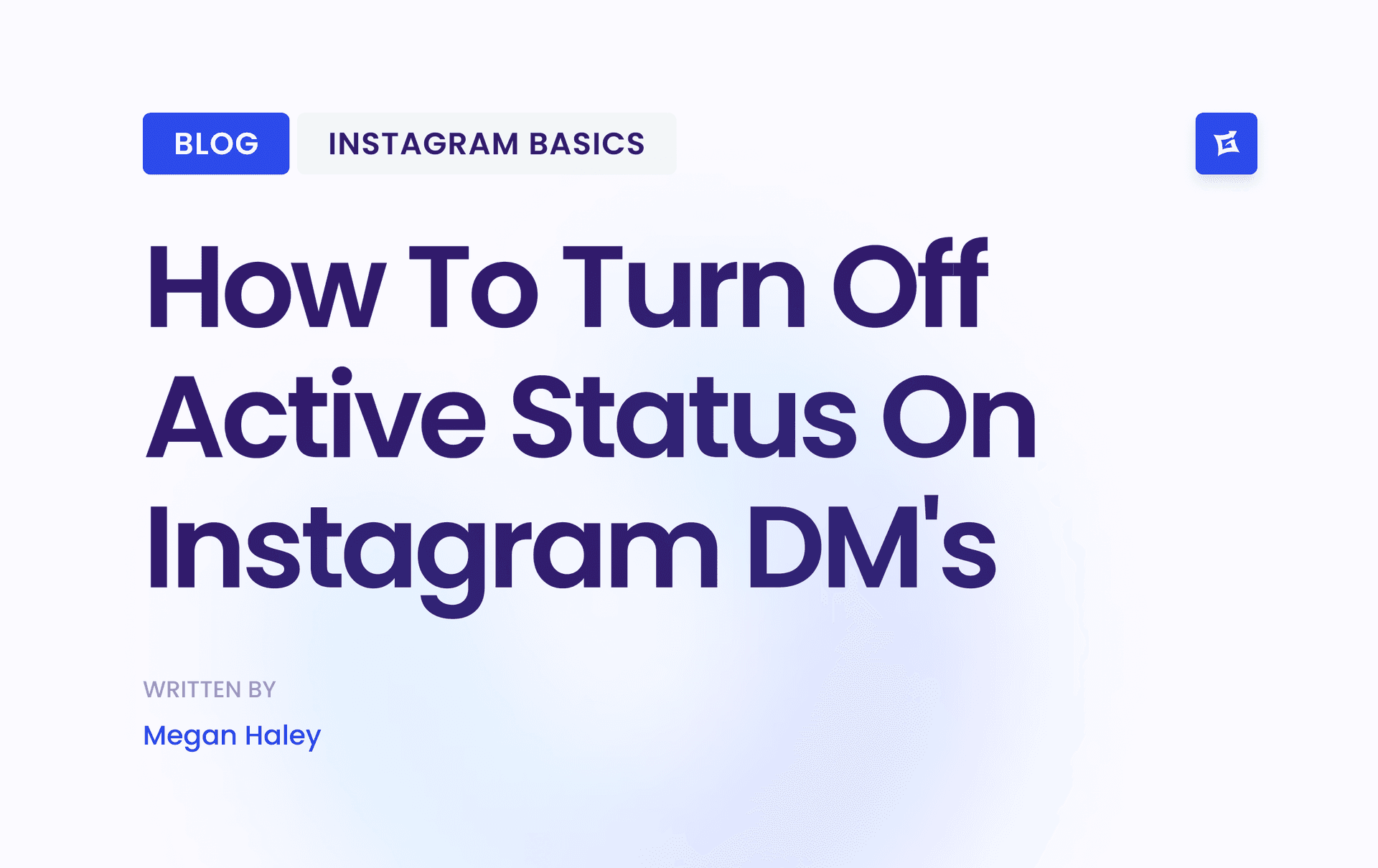





.png&w=750&q=75&dpl=dpl_5s5UbBNsq2av8n82cZ2R5qYP6gxi)
